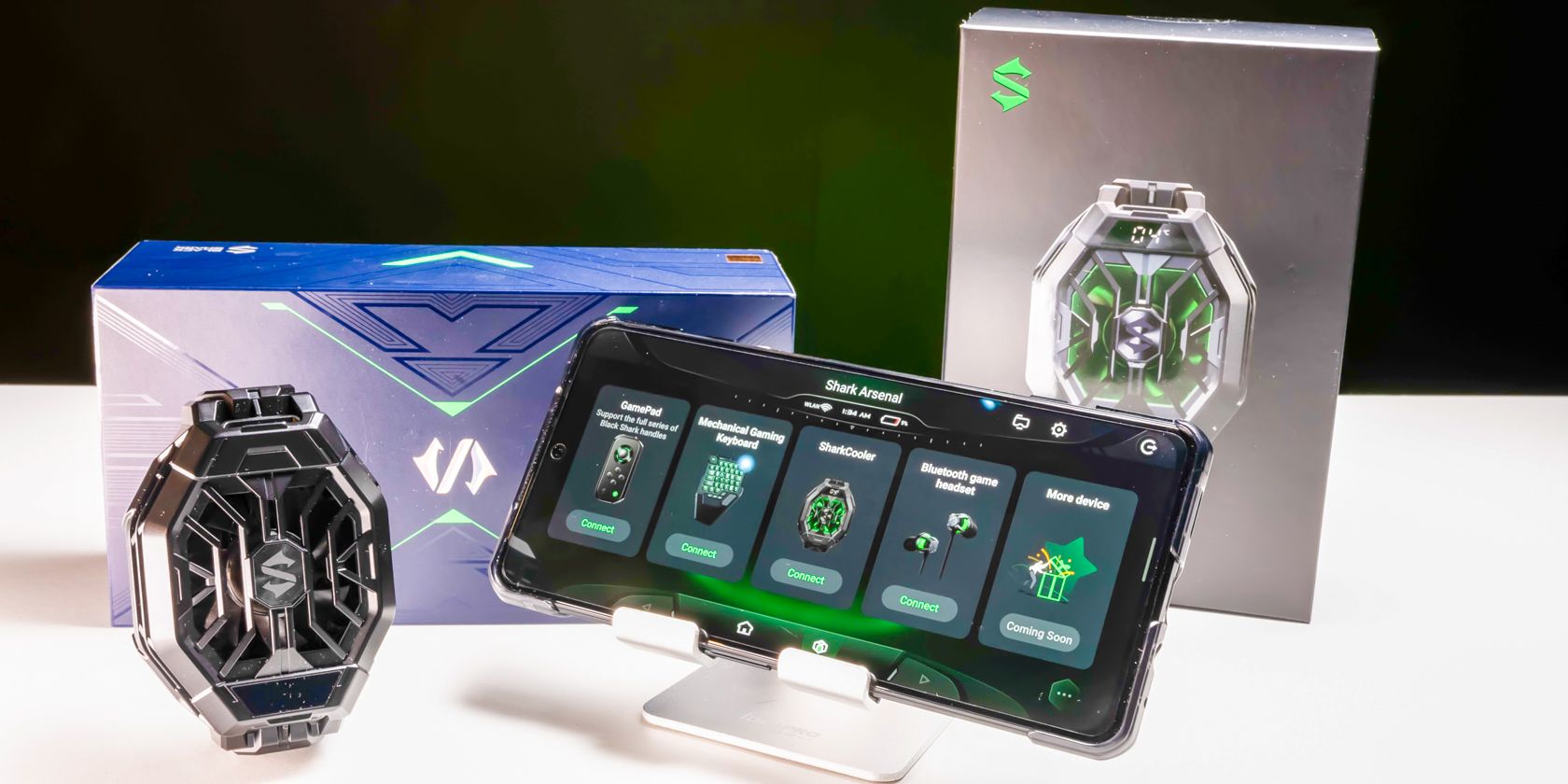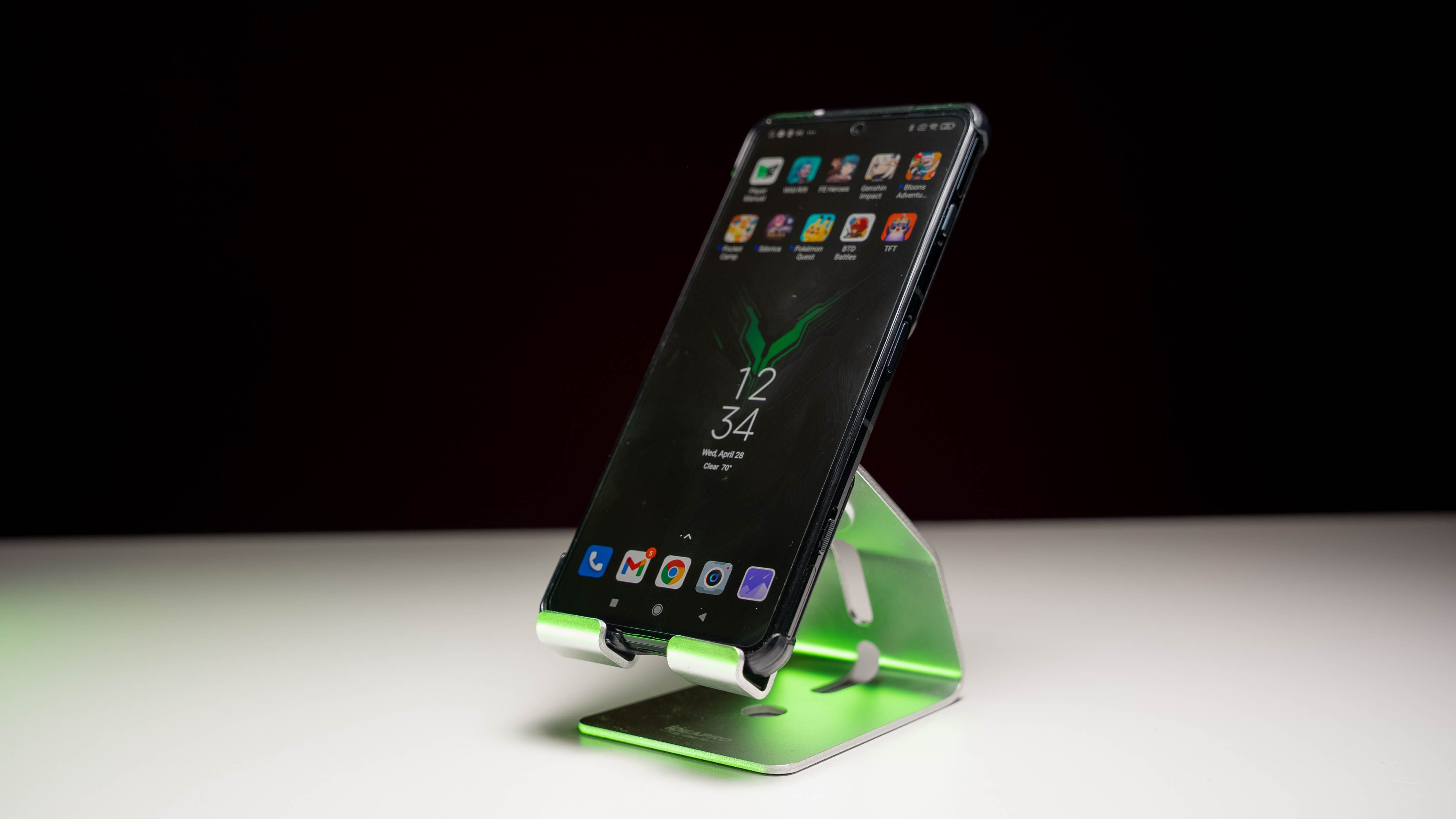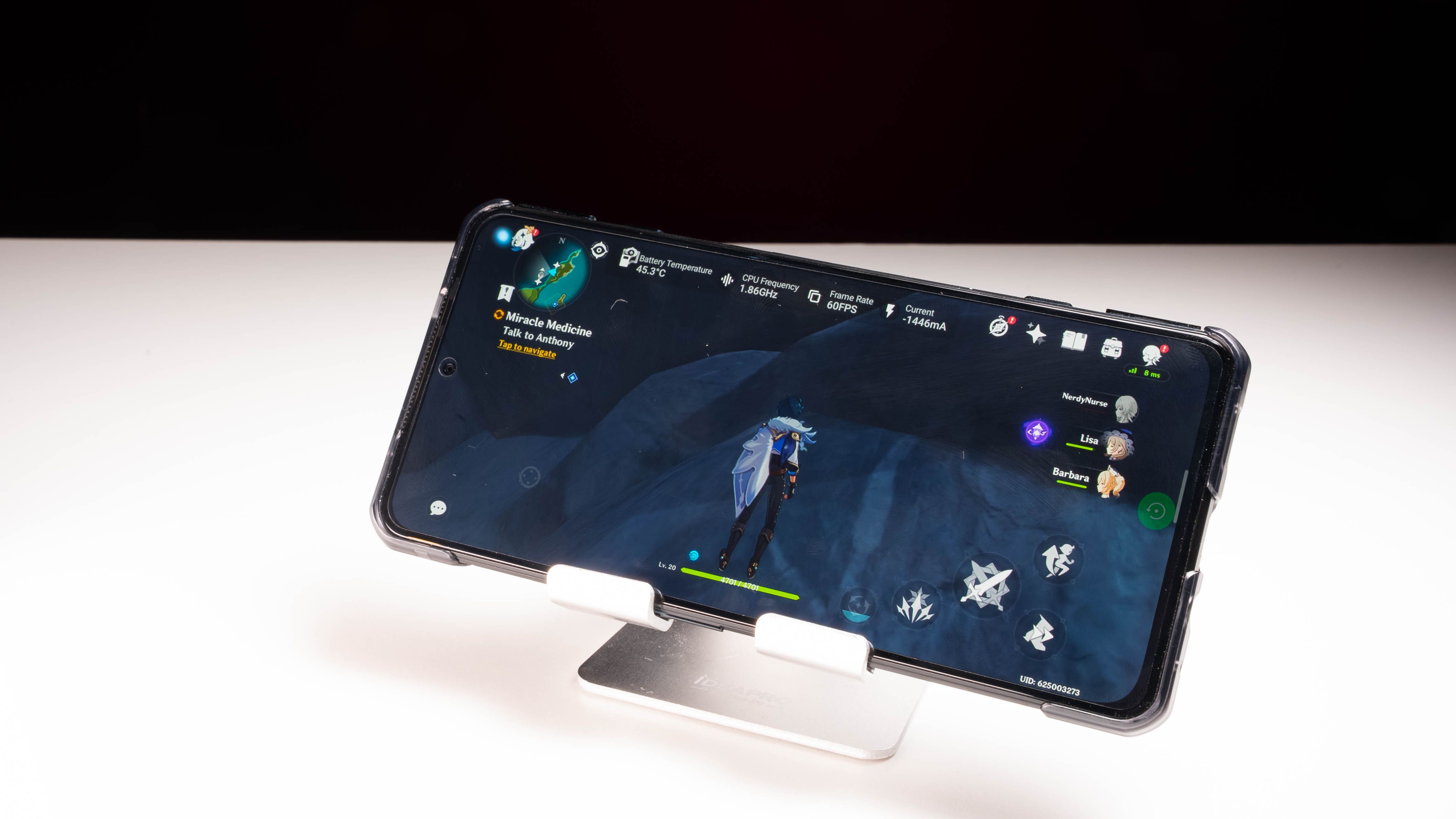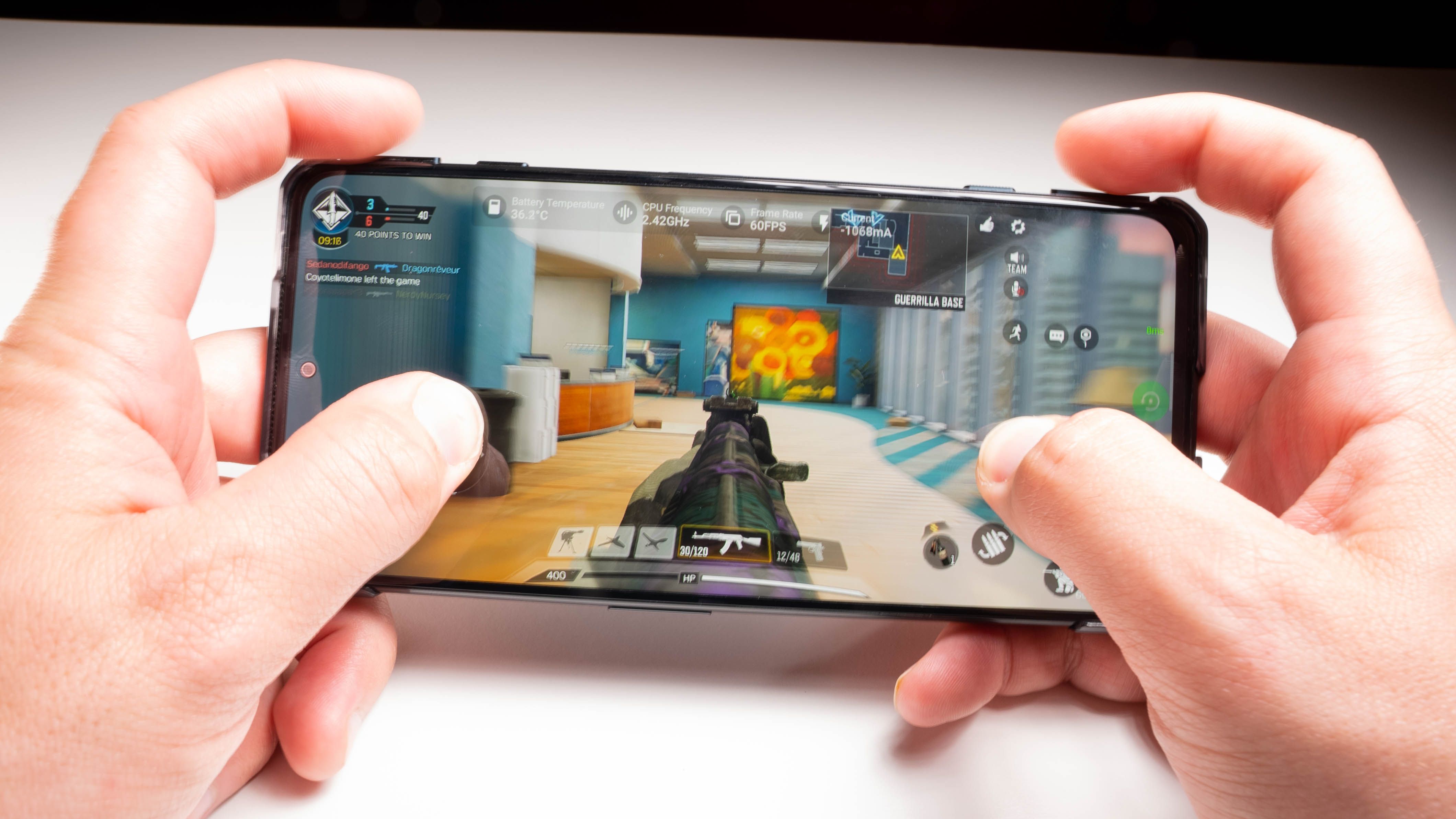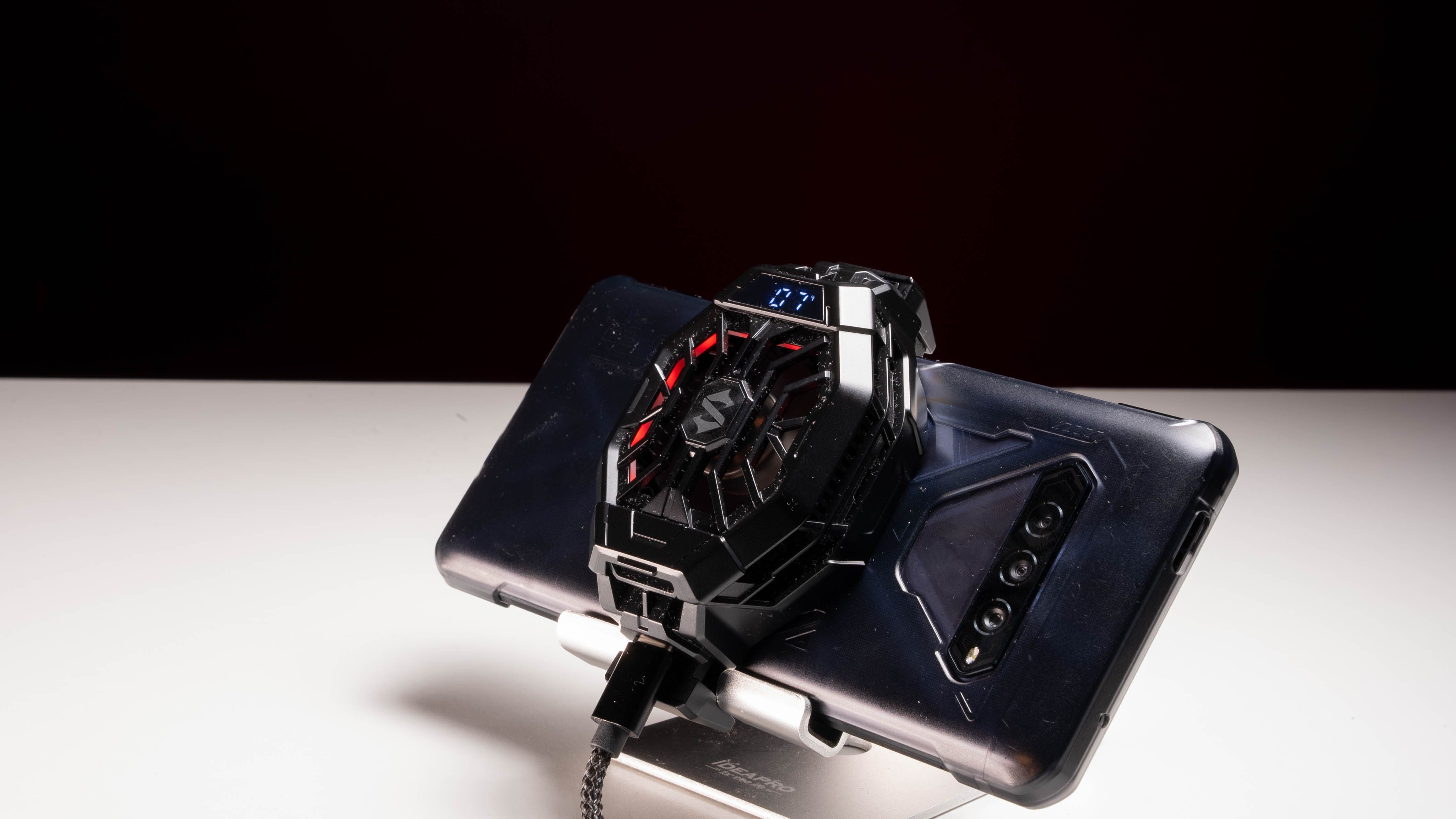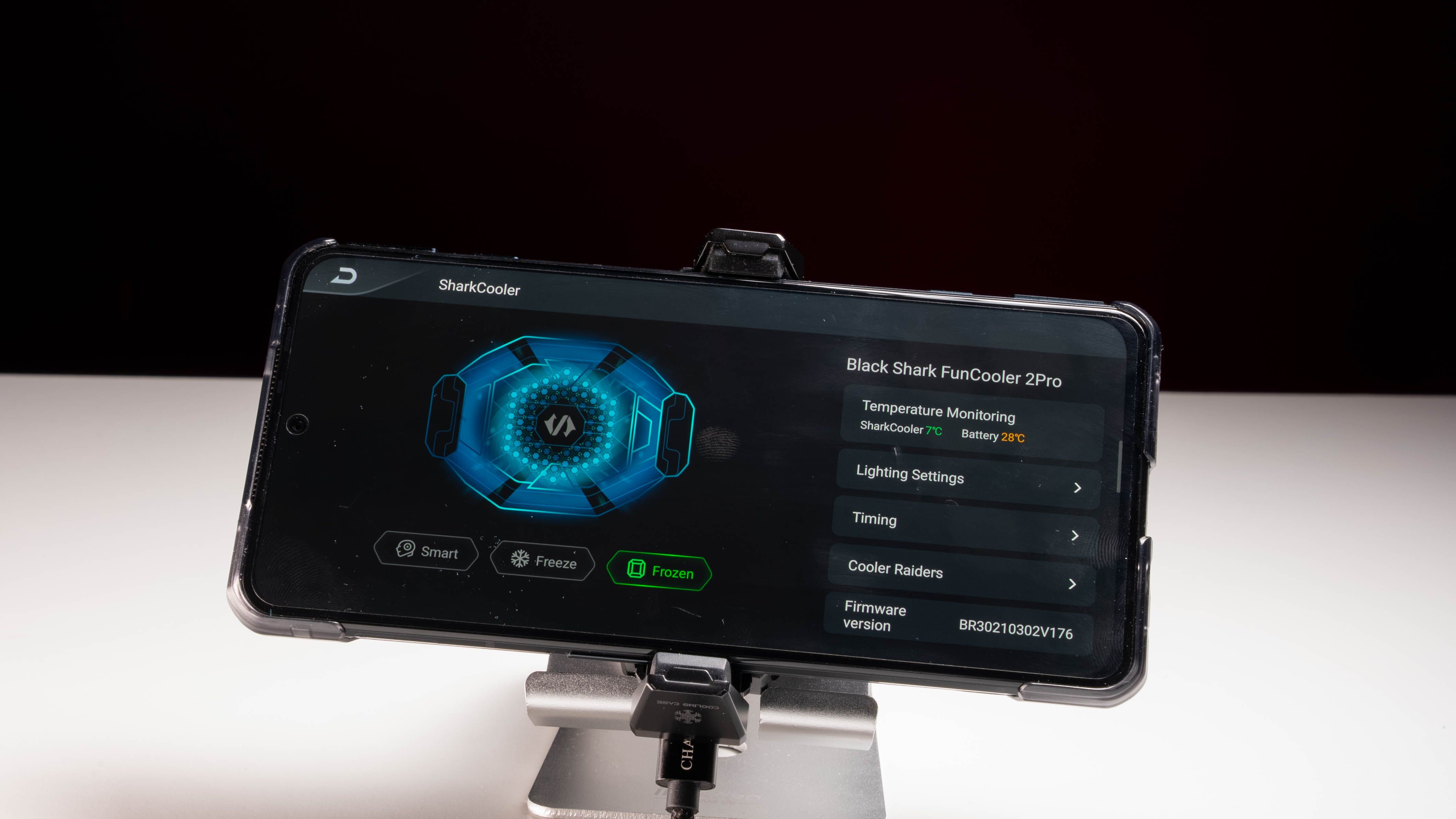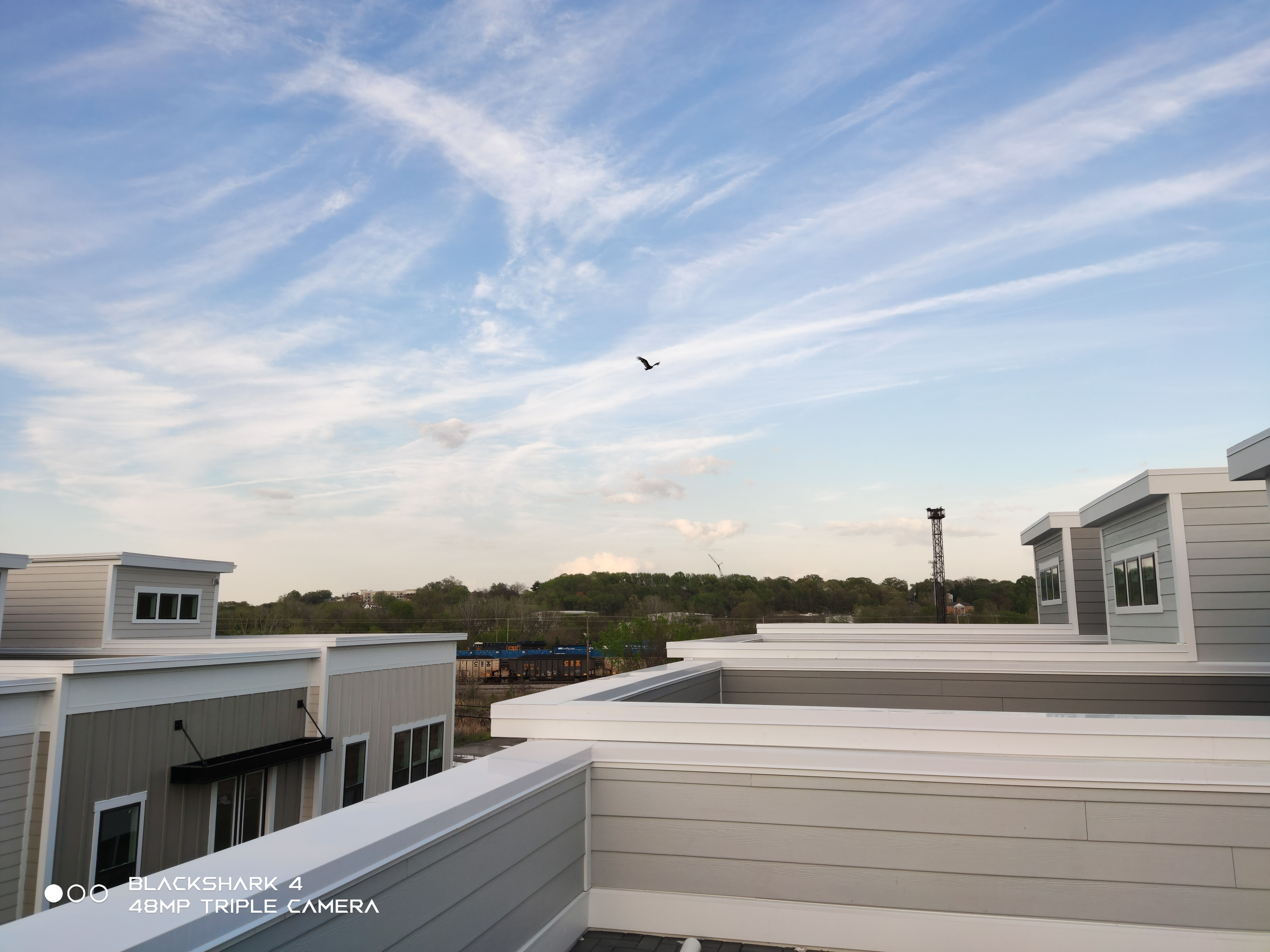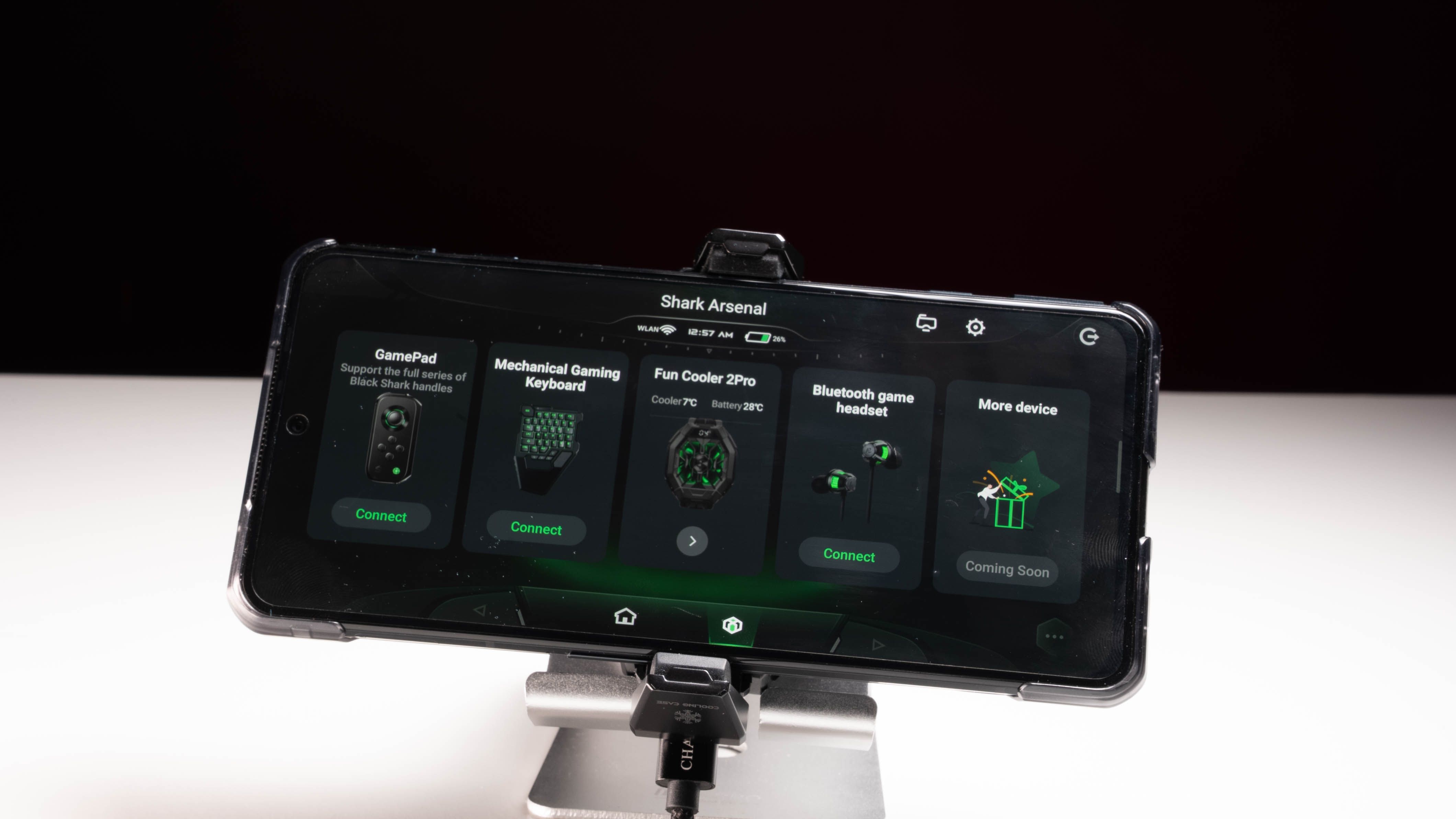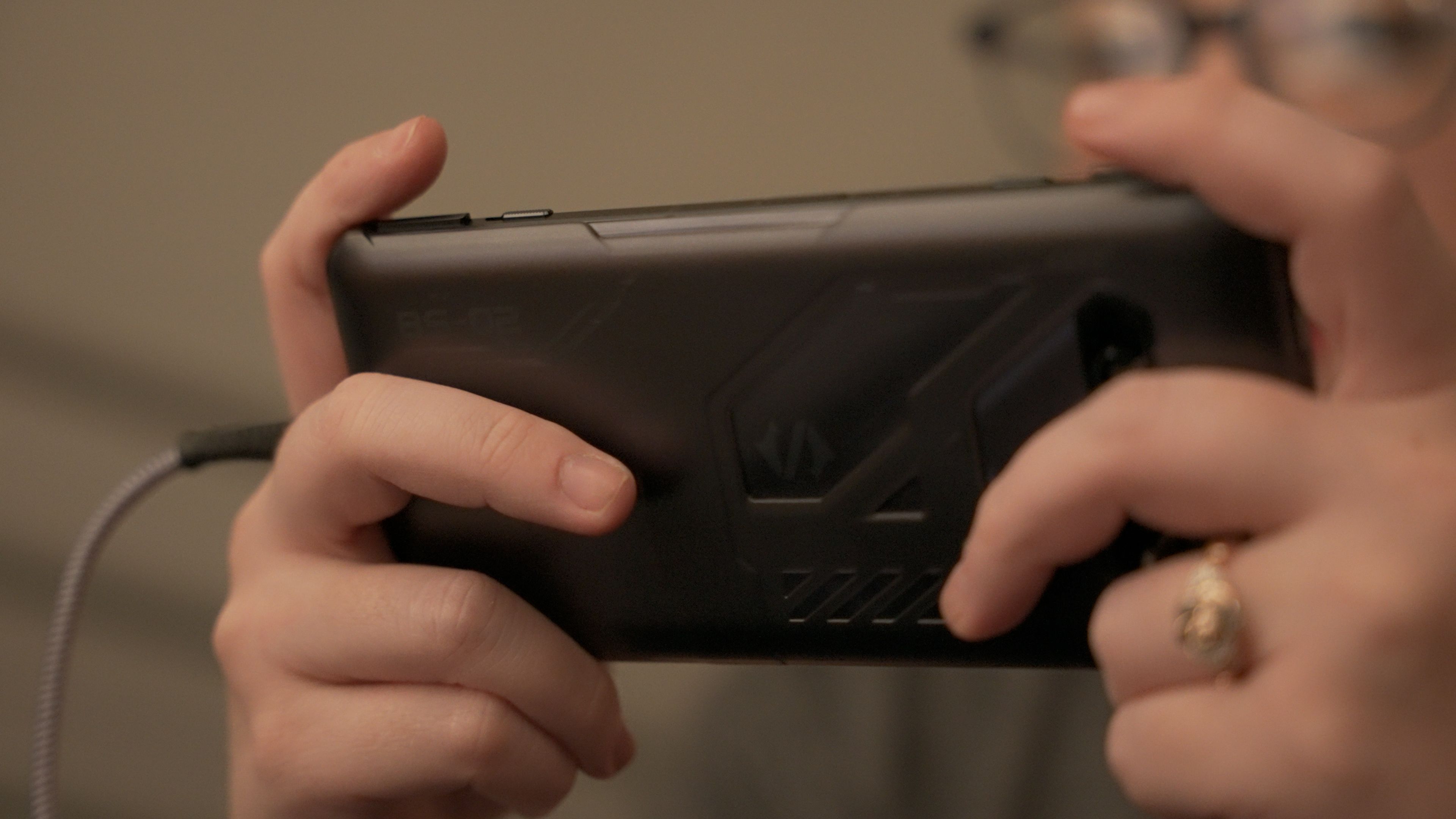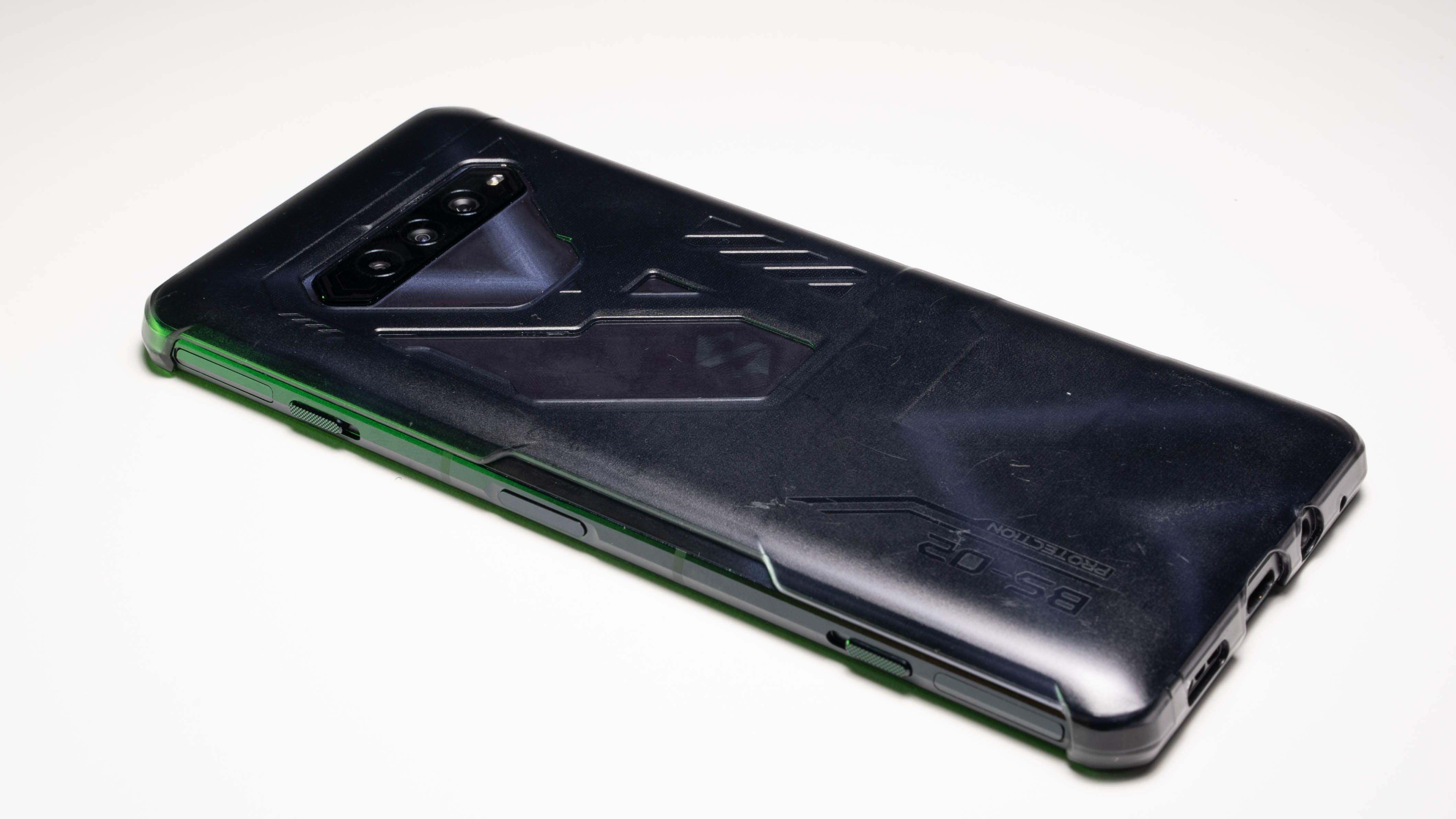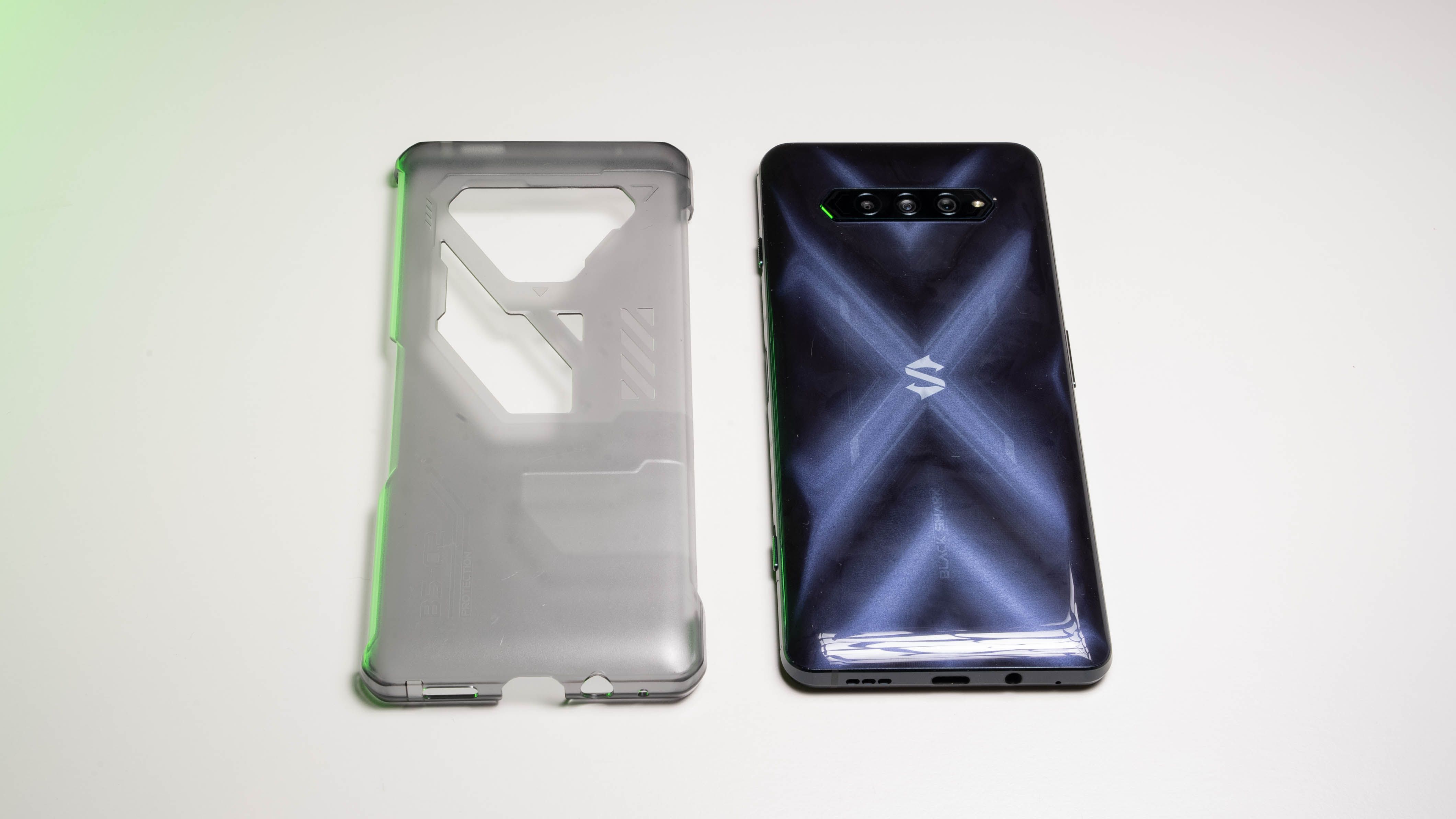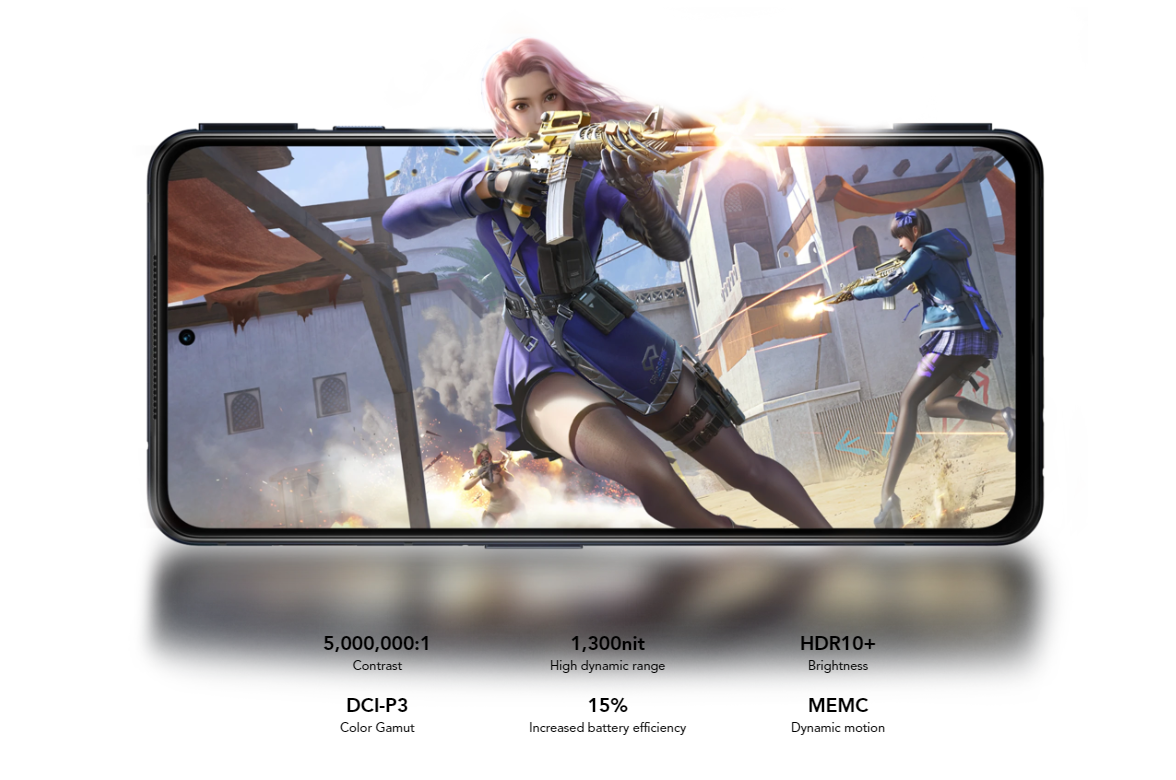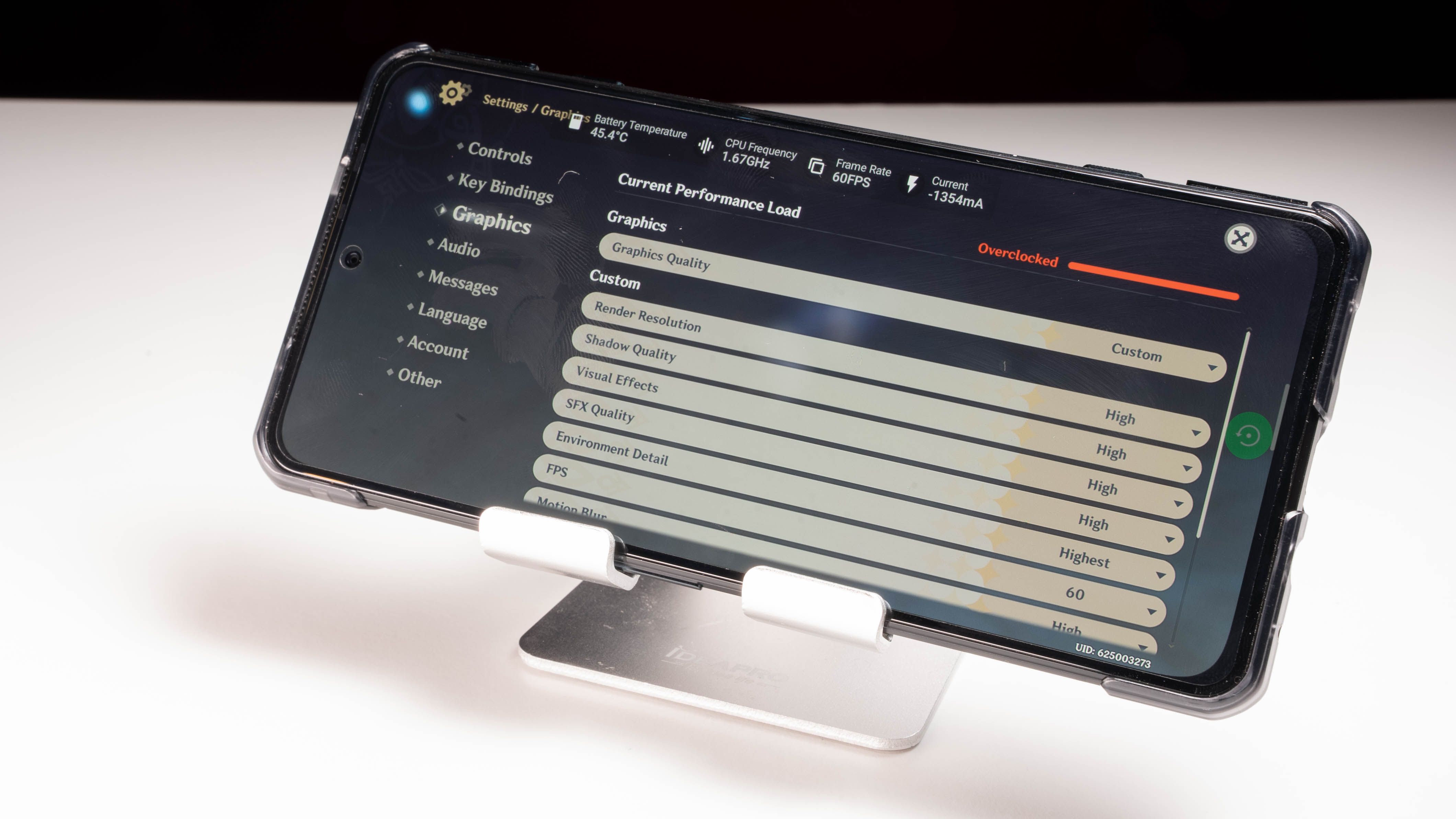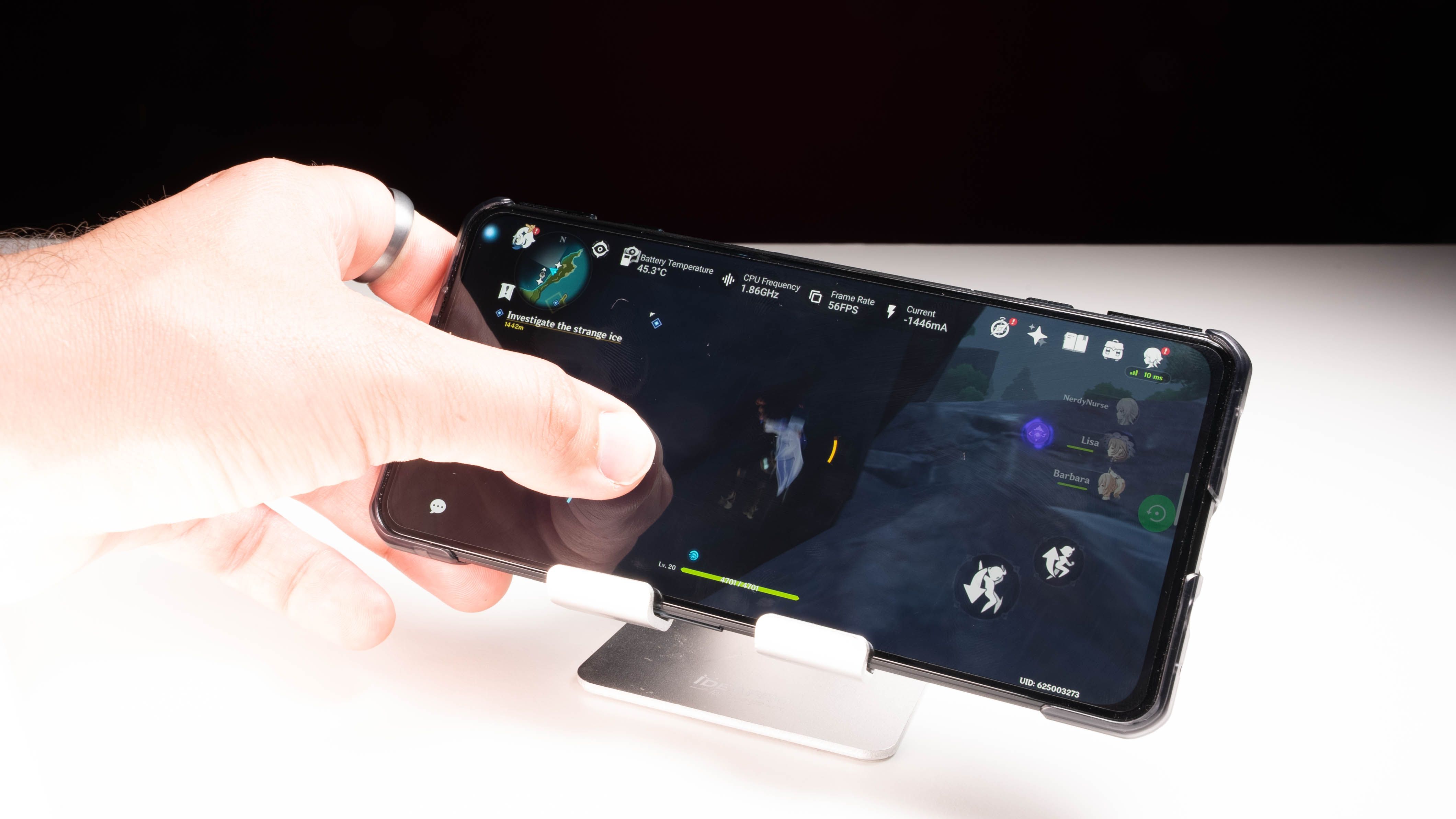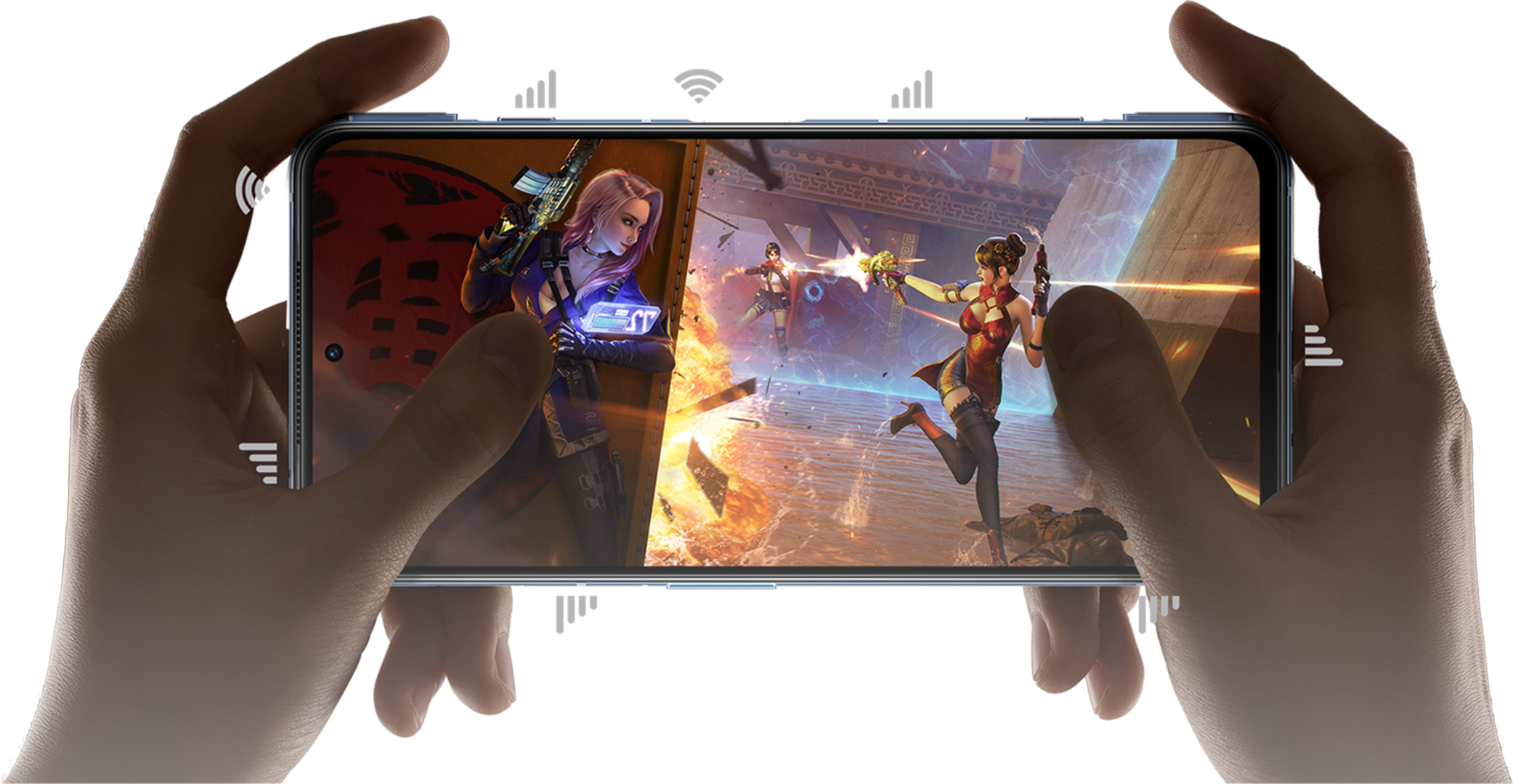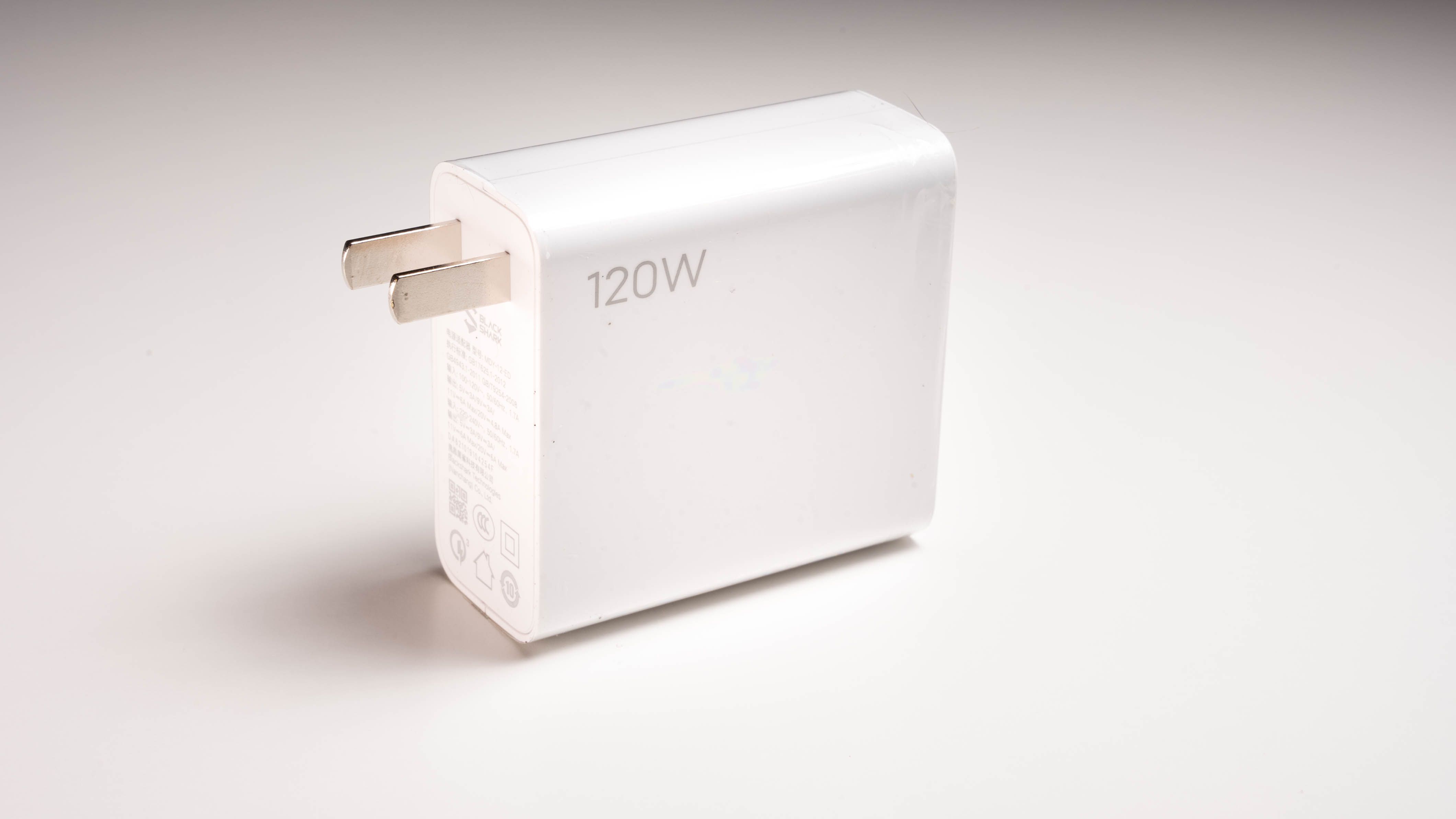Black Shark 4
The Black Shark has the best controls and inputs for gaming. Its 720Hz touch response and pop-up triggers will actually make you a better gamer.
- Brand: Xiaomi
- SoC: Snapdragon 870 5G
- Display: 6.67-inch, 144Hz, 1080x2400 Super AMOLED
- RAM: 8GB
- Storage: 128GB
- Battery: 4500mAh
- Ports: USB-C 2.0
- Operating System: Android 11
- Camera (Rear, Front): 48MP wide, 8MP ultrawide, 5MP macro, 20MP front
- 144Hz refresh rate
- Vibrant AMOLED screen
- 720Hz touch sampling
- Magnetic pop-up triggers
- Excellent value specs
- 120W fast charging
- Camera performance is mediocre
- Heavy gaming causes phone to get too hot without using optional cooler
- Using the phone while charging can be awkward to hold
- Several competitive games don't support more than 60fps
A few weeks with this phone, and its changed my perspective on mobile gaming. I’ve never enjoyed mobile games as much as I want to. The biggest thing that's been holding me back, especially for MOBAS and shooters, is the notoriously hard-to-use and imprecise touch-screen controls. With Black Shark's latest release of the Black Shark 4, they’ve got a couple of tricks to fix all that, the two biggest being, a highly responsive touchscreen, and physical buttons.
To celebrate the launch, Black Shark is offering $30 off the purchase price of $479 at AliExpress - use coupon code 30BSSELL. This is valid until May 11th. Also, the first 200 orders will get a bonus original fluorescent case, and a Black Shark "Gaming Finger Sleeve" (we are just as clueless about that one, I promise you). If you'd rather order from the official site, the first 100 orders get a free case and fan cooler.
We've been testing the Shark 4 for the past few weeks and were really surprised with not only how much more enjoyable games were compared to our non-gaming phones (an iPhone 12 mini and a Google Pixel 4a) but also how much better we actually were. In just two days, we quickly ranked up in games like Call of Duty Mobile, where we reached the master tier. We weren’t just playing better, we were outperforming everyone else. Coming from someone who doesn’t generally do all that well at shooters, that’s saying something. I used to be pretty skeptical about gaming phones, and for the most part, still am.
Of course, this phone does more than just game, but for this review, I’ll be focusing on the key features that make the Black Shark 4 not only stand out from other gaming phones but fundamentally changes the way you game with it.
Black Shark 4 Specs
Before even getting into the important game-related features, the device packs a lot of great specs at its price.
The Black Shark 4 uses the Qualcomm 870 processor, which is commonly found in many upper mid-range and affordable flagship devices. The Shark 4 Pro on the other hand, sports the beefier Qualcomm 888 which is currently Qualcomm’s most powerful processor.
The standard model is equipped with 6GB of RAM, which can be upgraded to 8GB or 12GB. Storage starts at 128GB UFS 3.1, which is very speedy, and can be upgraded to 256GB.
I’m reviewing the base version which includes the Qualcomm 870, 6GB of RAM, and 128GB of storage.
The Shark comes in 4 color options including Magic Black, Black, Blue, and Silver. In the test box, they’ve included a case as well which covers most of the phone’s rear but has a few cutouts, which I assume are for improved heat dissipation.
Important connectivity includes 5G, Bluetooth 5.2, USB Type-C 2.0, and (thankfully) a headphone jack, which can be handy for a latency-free audio experience while gaming.
It also has a fingerprint reader in the middle of the right side. It responds quickly and is situated at a reasonably good height to reach it easiest when holding the phone with one hand. Smaller hands might struggle, however, as it is still a bit of a stretch given how big this screen is.
Screen and Size
Equipped with a massive 6.67-inch AMOLED screen that supports HDR10+, you'll see impressively deep blacks and vibrant colors. Everything has a very punchy pop and combined with its size, this makes it great for watching movies and browsing the web. You definitely have a lot of screen real estate to work with here.
The display could do with being a bit brighter, which I primarily wanted when gaming outdoors. This is a pretty common downside to AMOLEDs however.
Holding the Black Shark 4 with one hand is ultimately not very comfortable, and I most often found myself using both hands. Likewise, even though the phone is relatively thin at only 0.39 inches (10mm), it’s 6.42 inches (163mm) tall and 3 inches (76mm) wide. It’s not very pocketable and will likely stick out a bit.
The plastic build helps keep the weight relatively low at just 7.41 ounces (210g), which is slightly less than the similarly sized 6.7-inch iPhone 12 Pro Max.
144Hz Refresh Rate | Benefits & Limitations
The screen is actually very special in some key areas. For starters, it has a 144Hz refresh rate compared to last years’ 90Hz. You can keep up with fast movement more easily whether gaming or just scrolling because more frames are shown each second compared to lower refresh rate screens. It can actually make the phone feel snappier and more enjoyable to use because of how fluid everything feels.
It's important to note, however, that not all games and applications can take advantage of that 144Hz display.
For mobile gaming, a higher refresh rate screen can be great so long as the CPU/GPU can keep up. There are a good number of games that now support 144FPS or uncapped FPS, though many of the more popular titles like Genshin Impact, Call of Duty Mobile and PUBG do not. Those are capped at 60FPS. Moreover, even if they did support it, you’d likely be hitting GPU/CPU bottlenecks unless you were playing at lower graphical settings.
While there are a growing amount of games and applications that support 144Hz, more graphically intensive ones still might not hit 144fps. Playing Genshin Impact, for example, with more demanding environments which had a lot going on, could easily dip the FPS to the low 40s and even 30s, with graphics set to maximum quality.
I don’t necessarily think fast refresh rate screens are a gimmick for phones, as they still have their advantages for certain games, apps, and the overall navigation of the phone. But they aren't as fully utilized as you might think. This is more of a limitation to the optimization of current games and the performance of current mobile chips.
Controls
720Hz Touch Sampling | Precise On-Screen Controls
What’s more impressive, however, and in my experience actually more beneficial to gaming, is its 720Hz touch sampling rate. Black Shark claims this to be “the most responsive smartphone touchscreen ever”. This high pressure-sensitivity makes it super easy to get precise movements for even the most competitive games.
Unlike with modern iPhones which have a 120Hz sampling rate, the slightest movements across the screen register more accurately. Higher sampling rates, as with the Black Shark, let the phone register your taps, flicks, and movements more quickly and frequently. This was immediately noticeable to me.
I've never been a huge fan of mobile gaming, primarily because the touchscreen controls never felt precise. With shooters=, I could never point and aim where I wanted to, making it overly frustrating. Movement and aiming with the Shark’s touch screen is a day and night improvement, but it doesn’t stop there.
Pop-Up Triggers
Introduced with last year‘s model, the magnetic pop-up triggers make their return with the Shark 4. The two top sliders reveal a left and right trigger button which can be custom mapped, via their Shark Center app, to any two A and B points on the screen. Having highly responsive physical buttons helped transform me from one of the worst at mobile shooters, to crushing the leaderboards.
At heart, I’m a PC gamer. Especially when it comes to first-person shooters and MOBAS, nothing has really come close to a mouse and keyboard in terms of fast and precise controls for me. That is until this phone arrived.
Honestly, at times it felt like I had an unfair advantage. Comparing the gameplay of just using the onscreen controls vs having the physical buttons is a huge difference. For shooters especially, being able to map your triggers to aiming down and the other to firing, makes you much more competitive. Your thumbs can focus on movement and aiming while your index fingers can handle shooting.
Combined with that high 720Hz pressure-sensitive screen, it actually gave me more precision and comfort compared to using an Xbox controller. While I don’t think I’m as good using this phone compared to my PC controls, it's by far the second closest thing.
Cooling
Keeping temperatures cooled is especially important with gaming phones. For the past few weeks, I’ve tested a number of long gaming sessions to see if the phone ever got hot to the touch or uncomfortable. Black Shark has upgraded their liquid sandwich design cooling system, which it claims is 30% more effective at heat dissipation. More graphically intensive games like Genshin Impact do stress the phone more and after a few hours, it can still get too hot.
FunCooler 2Pro
But, that’s where you then attach the optional "FunCooler 2Pro". Atrocious product naming aside, the heatsink and seven-bladed fan cools the phone noticeably in seconds. You can even see the temperature drop with its built-in display on the front. Of course, this has customizable RGB lights, because what doesn’t these days?
When paired to your phone’s Bluetooth, it can even be programmed to change colors based on the game you’re playing. At full “Frozen” speeds, it can get pretty audible, but it genuinely feels like a freezer is attached. Quieter fan speeds are available for when you don’t need that arctic cool. For less than $30, if you plan on gaming hard with this phone, it’s a no-brainer. Props to them for also making this compatible with other phones too, even iOS.
I would have liked to see a more integrated way of connecting and powering the cooler, however. Now you’ve got to remember to pack an additional charger and cable for the cooler if you take this on the go. Instead of having to power both the phone and cooler individually, a single charging solution would have been more convenient and easier.
Cameras
Cameras are more of an afterthought on gaming phones but are still worth mentioning. The Black Shark 4 has a triple camera system on the back and a front selfie camera.
The main shooter is a 48MP f/1.8, while the other two rear cameras are an 8MP ultra-wide and a 5MP macro. Compared to the iPhone 12 Mini (which sports a 12MP f/1.4 main sensor and a 12MP f/2.4 ultrawide) photos and videos overall weren’t nearly as polished and punchy as I'm used to, but by no means does that mean the Shark 4 was bad.
Most daytime side-by-side comparisons for stills were pretty close in fact. High contrast scenes, though, highlighted (pun intended) the weaknesses of these cameras and their processing. Switching between the 3 cameras and their modes, too, was much slower than I was used to. There was a noticeable delay before you could snap a photo and it wasn’t as seamless as iPhone’s and other implementations which allow you to tap to zoom in and out to switch between the cameras.
Selfies were alright. They did struggle with sharpness, however, looking overall soft, as well as struggling again in high contrast scenes.
Low-light shots were actually pretty decent if you held still for long enough. Most impressive, it seemed to retain the dark blacks, instead of making them bright purples like some cameras with their night modes often do.
That said, more cameras and higher megapixel counts do not give you the full picture (pun also intended). The 48MP images never looked sharper than 12MP iPhone shots, even when cropped in. Taking photos with the full 48MP was also a slow experience which required switching to a different mode as well as taking longer to actually capture the image.
I don’t see much practical use for the 5MP macro camera, given the niche use case and low resolution. It feels like an easy way for them to advertise having more cameras, while not necessarily having a single great one.
Video recording is decent but also has some quirks. The OIS (Optical Image Stabilization) is best for slow panning or tilting movements—anything too fast and it came off as very digital. 4K recording is limited to the main camera only; switching to the ultra-wide lens brings the resolution down to 1080p.
Battery and Charging
Between all that, you have a 4500mAh battery that supports 120W charging (and that's not a typo), whcih can charge the phone to full in less than 17 minutes. That’s fast. Even using the standard 67W charger, you’ll charge to 100% in less than 25 minutes.
If you’re like me and frequently forgetting to charge your phone overnight or use your phone heavily for longer sessions, the combination of a long-lasting and quick charging battery is great.
One downside, though, is the placement of the USB-C port. While yes, the bottom middle is the most obvious and commonplace for the port, charging the phone and gaming at the same time can be very awkward, causing your hand to cramp as you try to hold and play around it. Moving the port to say the middle left or right side would have been a unique feature and way for a gaming phone such as this to distinguish itself from a “traditional phone”.
Not Just for Gaming
I used to think gaming phones were more of a gimmick without any noticeable benefits compared to their non-gaming variants. In a lot of ways, this is still true, especially with those potential bottle-necks I mentioned earlier holding the phone back from taking full advantage of their higher refresh rate screens and being stuck with the same clunky touch-screen controls.
The Black Shark 4 has addressed the biggest issue with mobile gaming, giving you a more responsive screen as well customizable triggers. This is the first phone I actually enjoyed playing more competitive mobile games on. Not only that, I was actually really good at them, which I think is reason enough to get this for most people.
Even if you’re not that big into gaming, you’re getting some pretty killer specs in an awesome package for less than $500 that are hard to match, let alone beat.

